The Ultimate Guide to Cleaning Pearls: A Step-by-Step Tutorial

Let’s dive into the art of maintaining the pristine beauty of these exquisite gems.
Proper pearl cleaning is essential for preserving their luster and radiance and ensuring longevity.
Pearls, with their enchanting allure, have captivated humanity for centuries.
Yet, their delicate nature demands gentle care and attention.
In this detailed article, we will explore the importance of cleaning pearls correctly and walk you through a simple step-by-step process.
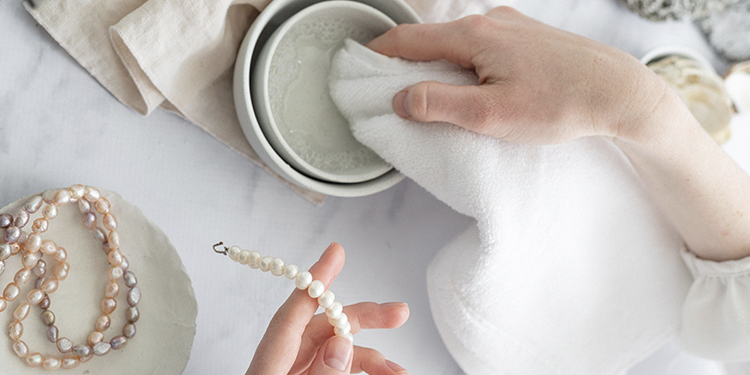
So, whether you have a treasured heirloom or a recent addition to your collection, join us in unlocking the secrets to maintaining the magnificence of your pearls.
Understanding Pearls
Pearls come in various types, each with unique characteristics.
The most sought-after pearls include natural pearls, cultured pearls, freshwater pearls, Akoya pearls, Tahitian pearls, and South Sea pearls.
Natural pearls are exceedingly rare, formed without human intervention, while cultured pearls are cultivated through human intervention.
Freshwater pearls are known for their affordability and diverse colors, while Akoya pearls are renowned for their perfect round shape and luster.
Tahitian pearls captivate with their exotic dark hues, ranging from grey to black, and South Sea pearls dazzle with their large size and radiant golden shades.
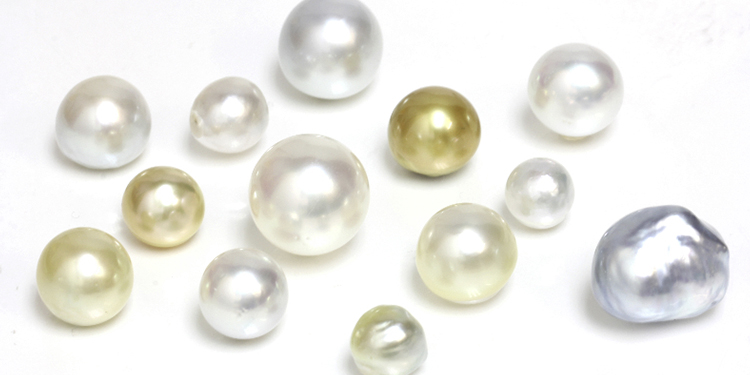
When it comes to pearl jewellery styles, the options are endless.
Classic pearl necklaces, elegant pearl earrings, and delicate pearl bracelets are just a few examples.
Each style offers a unique way to showcase the timeless elegance of pearls, making them a popular choice for formal occasions and everyday wear.
Understanding the factors that affect pearl cleaning is crucial to ensure longevity.
Pearls are delicate and can be easily damaged by harsh chemicals, abrasives, and prolonged exposure to sunlight.
Factors such as body oils, perfumes, and cosmetics can affect the luster of pearls over time.
Handling pearl jewellery with care is essential, gently wiping them clean after each wear and storing them separately.
By understanding the different types of pearls, exploring various pearl jewellery styles, and considering the factors that affect pearl cleaning, you can fully appreciate and care for these mesmerizing sea treasures.
Preparing for the Cleaning Process
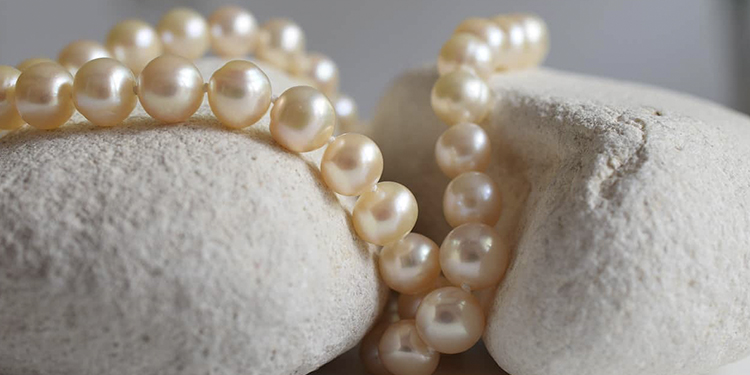
Before embarking on the pearl cleaning process, it's crucial to ensure you have all the necessary supplies at hand.
Gathering the essential cleaning supplies will make the process efficient and effective.
You will need mild soap or a specialized pearl cleaner, lukewarm water, a soft microfiber cloth or a soft-bristled brush, and a clean towel for drying.
Creating a safe and suitable cleaning environment is equally important.
Find a well-lit and clean area to handle your pearls comfortably without distractions.
Ensure the workspace is free from hazards or clutter that could damage your gems.
Put a soft cloth on the surface where you'll be working.
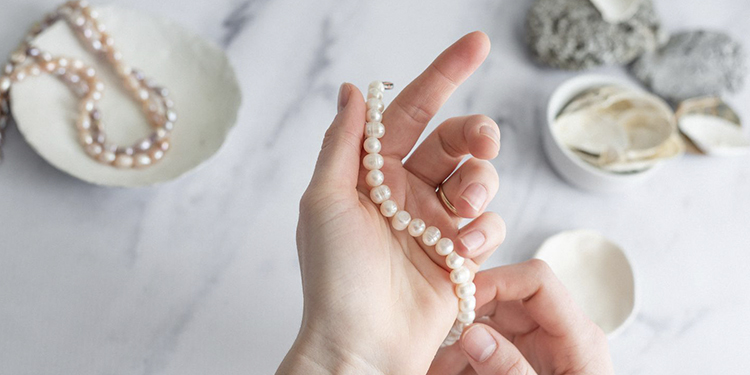
Additionally, consider the temperature and humidity of the cleaning environment.
Extreme temperatures and high humidity can have adverse effects on pearls.
Aim for a moderate and stable climate to ensure the pearls are not under unnecessary stress or damage during cleaning.
By gathering the necessary cleaning supplies and creating a safe and suitable cleaning environment, you'll be well-prepared to restore the luster and beauty of your precious pearls.
Basic Cleaning Techniques
When it comes to cleaning pearls, you can employ two basic techniques: dry and wet cleaning.
Let's explore each of these techniques in detail.
Dry Cleaning Methods
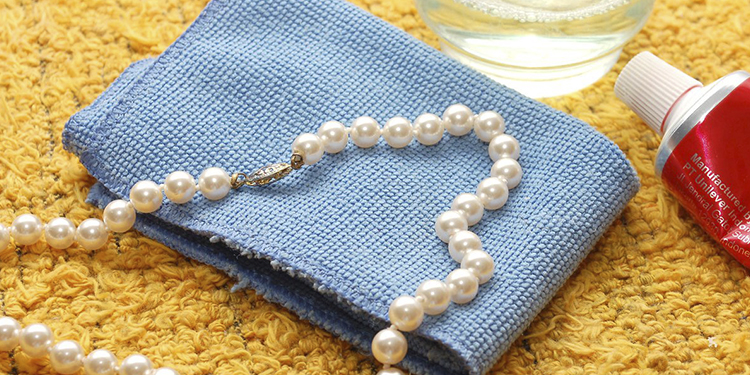
1.Use a soft cloth to remove any surface dust or dirt from the pearls gently.
A lint-free microfiber cloth works well for this purpose.
2.Next, you can use a natural bristle brush, such as a soft toothbrush or a specialized pearl brush, to brush the pearls gently.
This method helps remove any stubborn dirt or debris that may have adhered to the pearls' surface. Remember to brush lightly to avoid scratching or damaging the pearls.
Wet Cleaning Methods
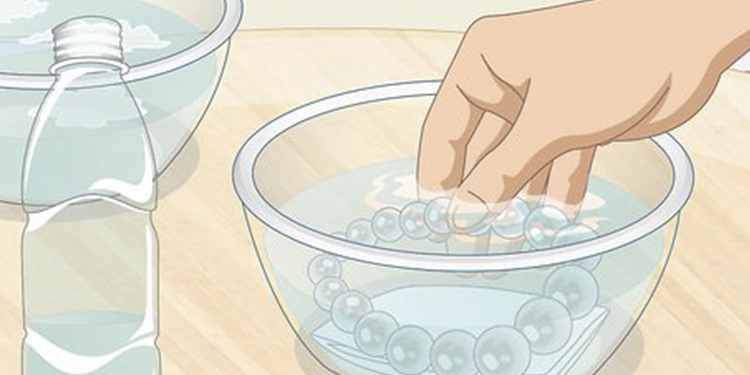
1.For pearls with light soiling, damp cloth wiping is suitable.
Dampen a clean, soft cloth with lukewarm water and gently wipe the pearls.
Be cautious not to soak the pearls or use excessive water, as it can weaken the string or damage its luster.
2.Use a mild soap and water solution if your pearls require deeper cleaning.
Add a small amount of mild soap, preferably specifically designed for delicate jewellery, to lukewarm water.
Dip a soft cloth or a soft-bristled brush into the solution and gently clean the pearls.
Rinse the pearls thoroughly with lukewarm water afterward to remove any soapy residue. Finally, pat them dry with a clean towel.
Remember, whether you opt for dry or wet cleaning methods, handling pearls carefully and avoiding harsh chemicals or abrasive materials is essential.
Advanced Cleaning Methods

There are a few options to consider regarding advanced cleaning methods for pearls.
Let's explore these methods in points, along with their benefits, precautions, and considerations:
Ultrasonic Cleaning
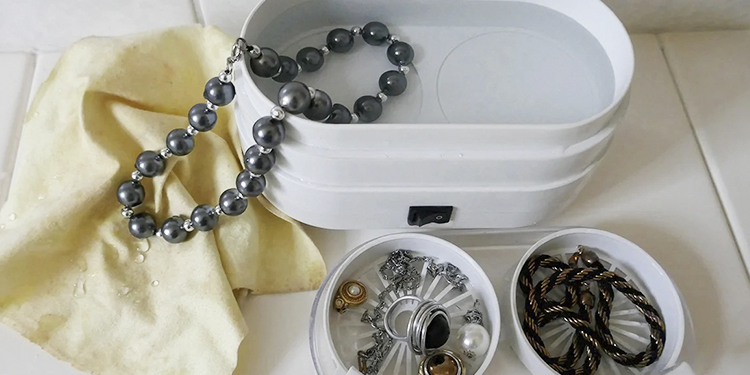
It uses high-frequency sound waves to create tiny vibrations in a cleaning solution.
This method can effectively remove dirt and grime from pearls.
●Benefits: Ultrasonic cleaning reaches areas that may be difficult to clean manually, providing a thorough and efficient cleaning process.
●Precautions: It is crucial to exercise caution when using ultrasonic cleaning for pearls. Certain pearls, such as freshwater or pearls with fragile coatings, may be more prone to damage.
Consult a professional or the pearl's manufacturer before attempting ultrasonic cleaning.
Steam Cleaning

Steam cleaning utilizes steam to remove dirt and debris from pearls.
●Pros: Steam cleaning can effectively loosen and remove stubborn dirt and oils from pearls, providing a deep cleaning result.
●Cons: Steam can be too harsh for certain pearls, especially those with delicate coatings or treatments. This method should be used cautiously; if unsure, it is advisable to seek professional guidance.
Professional Cleaning Services
Professional cleaning services specialize in cleaning and restoring various types of jewellery, including pearls.
●When to consider: It is recommended to consider professional cleaning services for valuable or delicate pearl pieces, antique pearls, or pearls with intricate designs. Professionals have the expertise and proper equipment to handle pearls safely and effectively.
Specialized Cleaning for Different Pearl Types
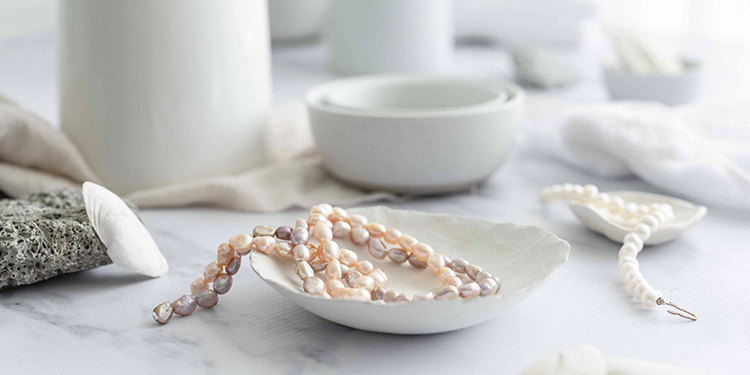
When it comes to specialized cleaning for different types of pearls, it's important to consider their specific characteristics and treatments.
Let's explore the cleaning methods for various pearl types in a point-wise manner:
Cleaning Cultured Pearls
Saltwater Cultured Pearls include Akoya, Tahitian, and the South Sea. To clean these pearls:
●Wipe them with a soft cloth to remove surface dirt or oils.
●Harsh chemicals or abrasive cleaners can damage the pearls' delicate nacre.
●Store them separately to prevent scratches.
Freshwater Cultured Pearls are known for their affordability and diverse colors. Cleaning them requires:
●Avoiding exposure to harsh chemicals, including household cleaners or chlorine, as they can damage the pearls.
●Storing them in a soft pouch or separate compartment to prevent scratching.
Cleaning Natural Pearls
Natural pearls are rare and formed without human intervention. Cleaning these pearls requires tender care:
●Wipe them gently with a soft, damp cloth to remove dirt and oils.
●Avoid using abrasive materials or harsh chemicals that can damage the pearls' natural surfaces.
●Store them separately to prevent scratches.
Cleaning Treated or Enhanced Pearls
Some pearls undergo treatments or enhancements to improve their appearance. Cleaning methods for these pearls include:
●Following the cleaning recommendations provided by the pearl's manufacturer or the jeweller who performed the treatment.
●Avoiding harsh chemicals, steam cleaning, or ultrasonic cleaning unless explicitly recommended.
●Regularly inspecting the pearls for any signs of damage or changes in appearance and seeking professional guidance if needed.
Handling and Storing Pearls

Properly handling and storing pearls is crucial for preserving their luster, quality, and longevity.
To avoid damage, handle pearls with clean hands and avoid excessive touching, as the oils and dirt from the skin can affect their appearance.
When not wearing pearls, store them separately from other jewellery in a soft pouch or lined box to prevent scratches.
Pearls are sensitive to chemicals, so avoid exposing them to perfumes, cosmetics, hairsprays, and household cleaners.
Additionally, protect pearls from prolonged exposure to sunlight or extreme temperatures, as they can cause fading or damage.
By following these guidelines, you can ensure that your pearls remain exquisite for years.
Tips for Maintaining Pearl Jewellery
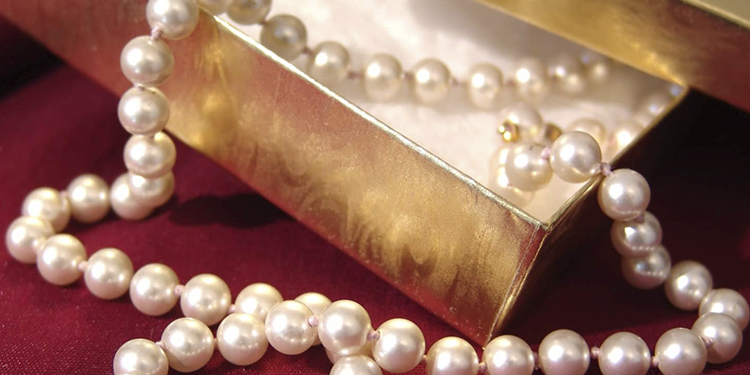
To ensure the longevity and beauty of your pearl jewellery, here are some essential tips for maintenance:
Regular Inspection and Maintenance
●Periodically inspect your pearl jewellery for any signs of damage, such as loose or broken pearls, worn-out strings, or tarnished metal components.
●Clean your pearls regularly using gentle cleaning methods to remove dirt, oils, and residues that can dull their luster.
Restringing Pearls: When and How
●Consider restringing your pearls every few years or if the string shows signs of wear or stretching.
●Choose a reputable jeweller experienced in pearl restringing to ensure proper handling and knotting techniques, preserving the integrity of your pearls.
Enhancing Pearls' Natural Beauty with Gentle Polishing
●Occasionally, pearls may benefit from gentle polishing to restore their natural shine.
●Use a soft, lint-free cloth to gently polish the pearls, avoiding abrasive materials or harsh chemicals that could damage their delicate surfaces.
Summary
Properly cleaning and maintaining pearls is crucial to preserve their beauty and longevity.
This guide covers everything you need about cleaning and caring for pearls.
It includes understanding different pearl types, preparing for the cleaning process, basic cleaning techniques, advanced cleaning methods, specialized cleaning for different pearl types, and tips for maintaining pearl jewellery.
Following these guidelines and techniques ensures that your pearls continue to shine and captivate for years.
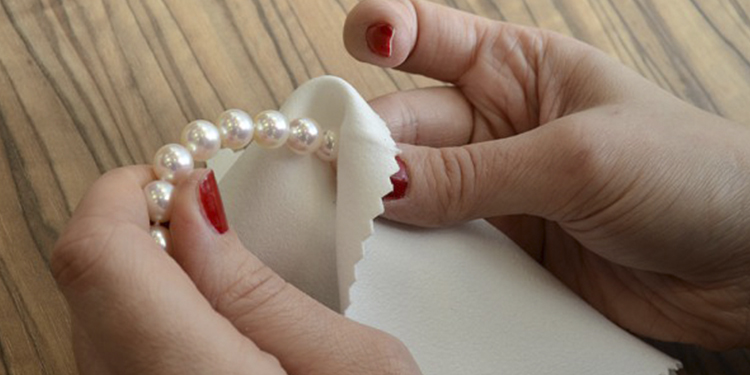
Pearls Cleaning FAQs
Can I clean pearls with regular jewellery cleaning solutions?
No, cleaning pearls with regular jewellery cleaning solutions is not recommended. Harsh chemicals can easily damage pearls. It's best to use mild soap or specialized pearl cleaners specifically designed for gently cleaning pearls.
Is it safe to use a toothbrush for cleaning pearls?
It is generally not recommended to use a toothbrush for cleaning pearls, as the bristles can be too abrasive and may scratch or damage the delicate surface of the pearls.
How often should I clean my pearl jewellery?
It's advisable to clean them every few months or as needed. Regular cleaning helps remove dirt, oils, and residues that can dull their shine and keep them looking their best.
Can I wear pearls while swimming or in the shower?
It is not recommended to wear pearls while swimming or in the shower. Exposure to chlorinated water, salt water, and soaps can damage the pearls' delicate surfaces and affect their luster. It's best to remove them before water activities.
Are there any natural remedies for cleaning pearls?
While it's best to use gentle cleaning methods specifically designed for pearls, natural remedies like a mild soap and water solution can work. However, it's important to exercise caution and consult professional advice if unsure.


Leave a Comment